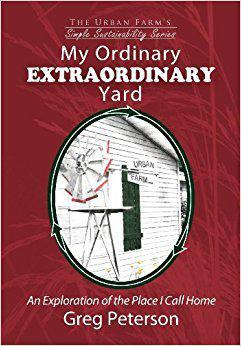Garden-Based Learning
(Not as Scary as it May Sound)
by Guest blogger: Lanita Perry
Listen to her podcast HERE
Garden-Based learning gives a whole new meaning to ‘engaging students’. The key to getting students out into the school garden is to have a ‘hand holder’ on your campus. A person, usually a teacher, who will take charge of the garden in such a way as to encourage teachers and students to get out of the classroom and go to the garden. This person should not be a dictator or a micro manager. I have found, in my own experience, most teachers just need a nudge.
Nudge the teachers!
I typically will send out a series of short emails (emphasis on short) with reminders and garden tips as the growing season approaches and progresses. For instance three weeks before growing season:
Spring growing season will begin soon. In our growing region it is safe to plant on (date). Here is a link to show your students how to find gardening regions for our area (state): https://garden.org/nga/zipzone/
You can use mathematical graphs or voting systems to engage your students in the process of deciding what your class wants to plant. Tip: Seed packets are a wealth of information and opportunities to use Math, Science and Social Studies’ (region map) essential knowledge and skills.
Have fun and let me know if I can help!
(Your name)
That’s it, a short, to-the-point, helpful email that gives teachers some ideas and practical applications to use with their students. Their class’ experience in the garden will get them hooked!
Other emails can follow: watering schedule, maybe a chore needs to be done in the garden (moving mulch, digging potatoes, onions, etc.) Ask for grade levels or classes to volunteer. I had 5th grade students giving up recess to move mulch (a truck load donated by the city). Their first experience using a shovel and a wheel barrow and they were fascinated. They devised their own plan for taking turns with the tools.
These little nudges will help keep your teachers and students interested in your school garden and make your garden successful.
Getting Started
Now that you have an idea about what Garden-Based Learning is all about, how can your school district get started? I suggest you approach a professor of horticulture at a local two year college, if available, or possibly a high school teacher in the same field. This person will be enthusiastic and, hopefully, a wealth of information and resources for possible donations of items and funding.
Pick a spot for your garden that is close to the school building, very accessible to foot traffic, and accessible to water. Decide what type of beds you want in your garden. A great resource for ideas is http://www.squarefootgardening.com/ . You can build your own, or use other ideas: https://www.gardenista.com/posts/steal-this-look-water-troughs-as-raised-garden-beds/ . You can also ask your high school shop class to make the beds. Our beds are made with 1×12’s, 8’ x 4’.
Contact your local Master Gardener’s Program. Google “Master Gardeners” for help in your area. Our Master Gardeners donated a box of seeds per elementary.
Remember that professor of horticulture? See if he/she has students who will volunteer to help organize a planting day for the school. These can also be high school students.
Planting Day
Your initial planting day will include setting up your garden. Every grade level should be involved. Some preparations include:
- Have the raised gardens ready to place.
- Have card board ready to put under the gardens to prevent weeds/grass growing up into the beds.
- Have garden soil and nutrients delivered and in place.
- Have mini plants grown by different grade levels or classrooms ready to plant.
- Have seeds ready, with the method you choose to plant them, explained to your students.
- Have water hoses/sprinklers ready to use after planting.
- Create a schedule for when each grade level will be working in the garden.
The next planting season, spring or fall, your garden will be in place and ready to use. Be patient; each planting season builds on a beautiful garden your school will be very proud of.
Parental Involvement
A few ideas:
Three weeks before growing season, get the parents involved by sending pots with seeds in them home with your students. Encourage them to grow them as a family. Have a grade level planting day inviting parents to help their student plant the flower or bean or crop they all worked on.
During Math and Science nights, set up a table with crops from the garden for sale for a donation to the garden. These can be herbs, vegetables, or flowers. Sell seeds from the garden. Have students’ plant herbs in small pots to sell, also.
Get your Student Council and PTA involved by donating items or funds to the garden.
Have fun!
You will see your students’ understanding of Math and Sciences grow as they have the opportunity for real life application of their knowledge and skills. You will see students wanting to write and illustrate about their experiences in the garden. Gardening builds goal-setting and teamwork.
On a final note, please remember to have fun in your school garden.
– Lanita
Here are some helpful links:
- Garden-based education lessons by grade level: https://kidsgardening.org/lesson-plans/
- Square Foot Gardening: http://www.squarefootgardening.com/
- Curriculum | School Garden Resources A bilingual garden dictionary for elementary schools and after-school gardening programs, from UC Davis: (extension.uga.edu/programs-services/school-garden-resources/curriculum.html)
- Garden lesson plans – Growing Minds – Growing Minds Farm to School … Classroom Activity Accompanying Books Description Suggested Month Planting in the Garden: (growing-minds.org/garden-lesson-plans/)
- Gardening Worksheets, Lessons & Activities – TeacherVision 27 items – Use these worksheets, references, and activities to teach children about soil, fruits, vegetables, and gardening. Enrich your curriculum with resources about flora, review garden tools, and enhance lessons with clip art images. (https://www.teachervision.com/gardening)
- Ag in the Classroom – Texas Farm Bureau texasfarmbureau.org › Youth
About this author:
 Lanita is a Special Education teacher at Irving Elementary in Cleeeburne, Texas and teaches in a Preschool Program for Children with Disabilities. She’s very excited about garden-based education and the opportunities it gives her students to learn across all academics in every grade level. Her school garden is funded through grants so she is able to work with teachers and students to create their own garden.
Lanita is a Special Education teacher at Irving Elementary in Cleeeburne, Texas and teaches in a Preschool Program for Children with Disabilities. She’s very excited about garden-based education and the opportunities it gives her students to learn across all academics in every grade level. Her school garden is funded through grants so she is able to work with teachers and students to create their own garden.
You can email her at: school.gardens.u.can.do@gmail.com
*Disclosure:
Some of the links in our podcast show notes and blog posts are affiliate links and if you go through them to make a purchase, we will earn a nominal commission at no cost to you. We offer links to items recommended by our podcast guests and guest writers as a service to our audience and these items are not selected because of the commission we receive from your purchases. We know the decision is yours, and whether you decide to buy something is completely up to you.







